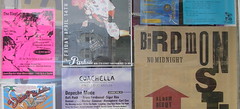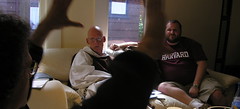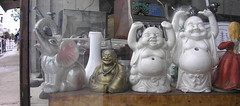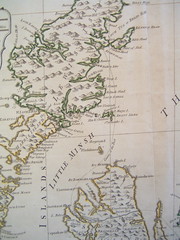The Awakening of Psychogeography: Child Psychology, 1923-1977, and the perception of landscape
 From 1923, when Melanie Klein published her psychological studies of children playing in sandboxes, to 1977, when the first studies of place cells were published, the primary field of new research in the mental processing of the landscape was child psychology. Piaget and Donald Winnicott claimed claimed to study the “infant’s point of view.” Piaget observed children drawing objects and discerned the lack of a sense of a Cartesian grid in their mental worlds; things that were emotionally near were reached for as if physically near. The psychoanalyst Edith Cobb, embarking on a long-term study of childhood experience, identified a formative period between five and twelve, when most of a child’s energy was directed not towards parents or friendships but rather towards place. At this age, she wrote, “the natural world is experienced in some highly evocative way, producing in the child a sense of some profound continuity with natural processes and presenting overt evidence of a biological basis of intuition.”
From 1923, when Melanie Klein published her psychological studies of children playing in sandboxes, to 1977, when the first studies of place cells were published, the primary field of new research in the mental processing of the landscape was child psychology. Piaget and Donald Winnicott claimed claimed to study the “infant’s point of view.” Piaget observed children drawing objects and discerned the lack of a sense of a Cartesian grid in their mental worlds; things that were emotionally near were reached for as if physically near. The psychoanalyst Edith Cobb, embarking on a long-term study of childhood experience, identified a formative period between five and twelve, when most of a child’s energy was directed not towards parents or friendships but rather towards place. At this age, she wrote, “the natural world is experienced in some highly evocative way, producing in the child a sense of some profound continuity with natural processes and presenting overt evidence of a biological basis of intuition.” Play for the infant, Winnicott argued, happened in a space with neither “inner psychic reality” nor “external reality.” He describes a dialectic between merging with mother and separation that is reduplicated with every nonliving object around the child, in particular blankets, teddy-bears, or other cherished objects that the child can alternately caress and attack, treating one moment as the human extension of her own body and the next as an insensate object, its button eyes to be torn out. The sense of self and otherness is therefore gradually formed in the “potential space between the individual and the environment.” The environment becomes thus infested with creative play that invests all objects in the immediate landscape with valuation, extrapolation, and association.
Cobb showed children Rorschach tests and watched them play in sand boxes. She observed with fascination how the children seemed to express emotional attachment in play with objects more vividly than with people or animals.
“I became acutely aware that what a child wanted to do most of all,” she wrote, “was to make a world in which to find a place to discover a self.”
Winnicott defined two different kinds of childhood learning about the environment: the first, “favourable” outcome happens an abundance of individual symbols and fascinations projected onto the environment: “the potential space becomes filled with the products of the baby's own creative imagination.” The landscape where childhood play is allowed becomes “sacred to the individual” as the place where she “experiences creative living.” This is the world of play, characterized by a sense of wonder, free enjoyment, and easy association that Winnicott lauds as giving children a sense of the fullness of their own potential and the many riches of experience. It takes the form of turning any landscape into a magical wonderland, invested with the potential of encountering fairies or taking adventure.
The second outcome, Winnicott argued, would happen in cases of “failure of environmental reliability,” when a baby absorbs adults’ perspectives on the environment. This form of learning teaches the child about zones of danger and safety, but discourages play, and so, Winnicott concludes, is less consistent with the individual development of an internal life, of the ability to critique authority, or of risk-taking behavior outside. Individual imagination in safe childhood exploration of landscape was thus set up against collective order of the environment and the manufacture of a disciplined, uncritical subject.
Most adults, Winnicott argues, have experience of both playspace and discipline. Mature adults can return to access their mental worlds of play, the space of “unintegration,” which he defines as a “day-dream-like” state where fantasy, dream, and real world meet, inner projections applied and then separated from real-world objects, the limits of self and other readjusted. Only by relating to the landscape, he thought, did children have the opportunity of distinguishing themselves as independent entities, of parsing “the nature and interrelationship of inner and outer objects and worlds.”
(Photo thanks: cc 2006 Ian)
Labels: child psychology, inscape, landscape, perception, piaget, psychogeography, winnicott










0 Comments:
Post a Comment
<< Home